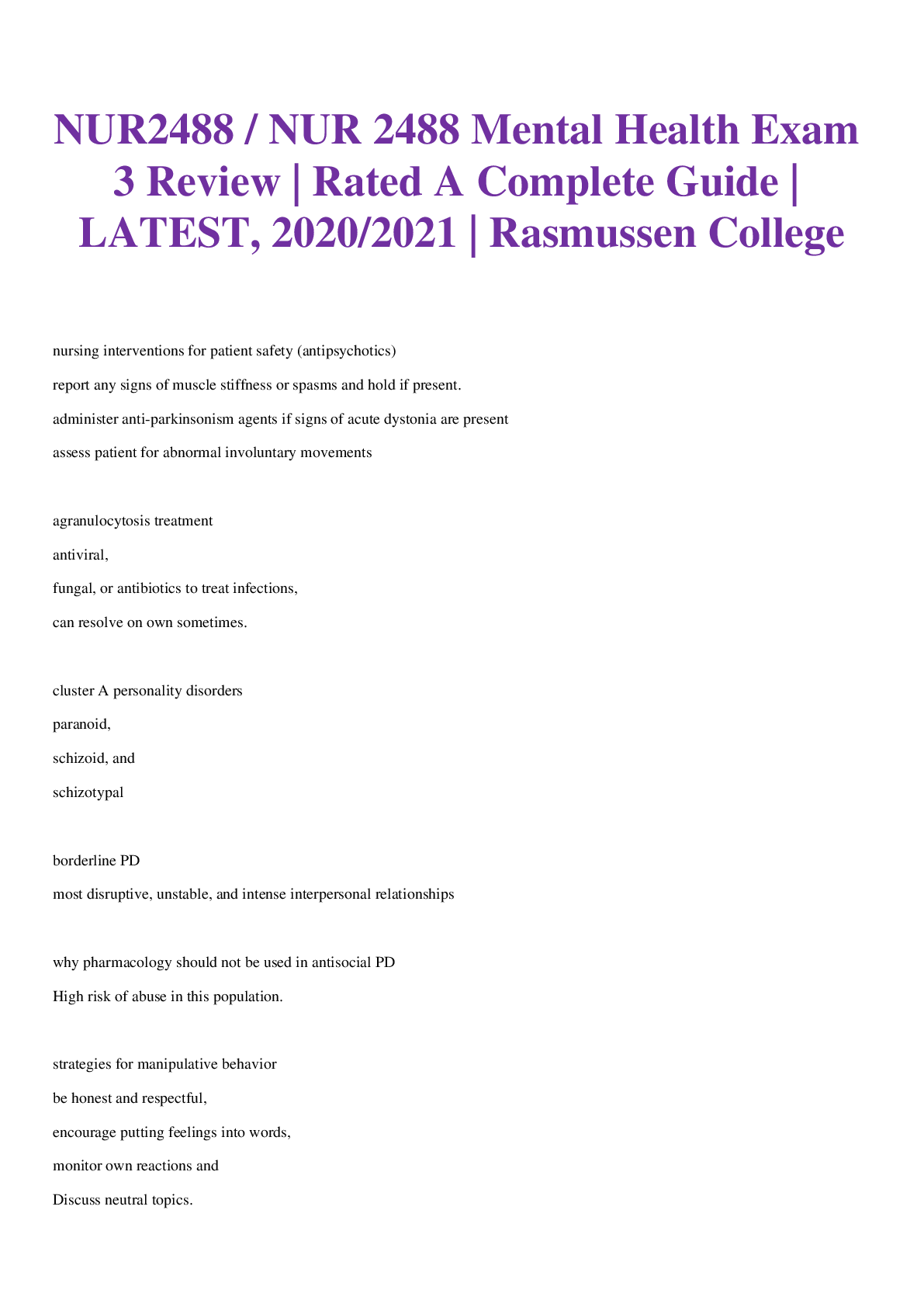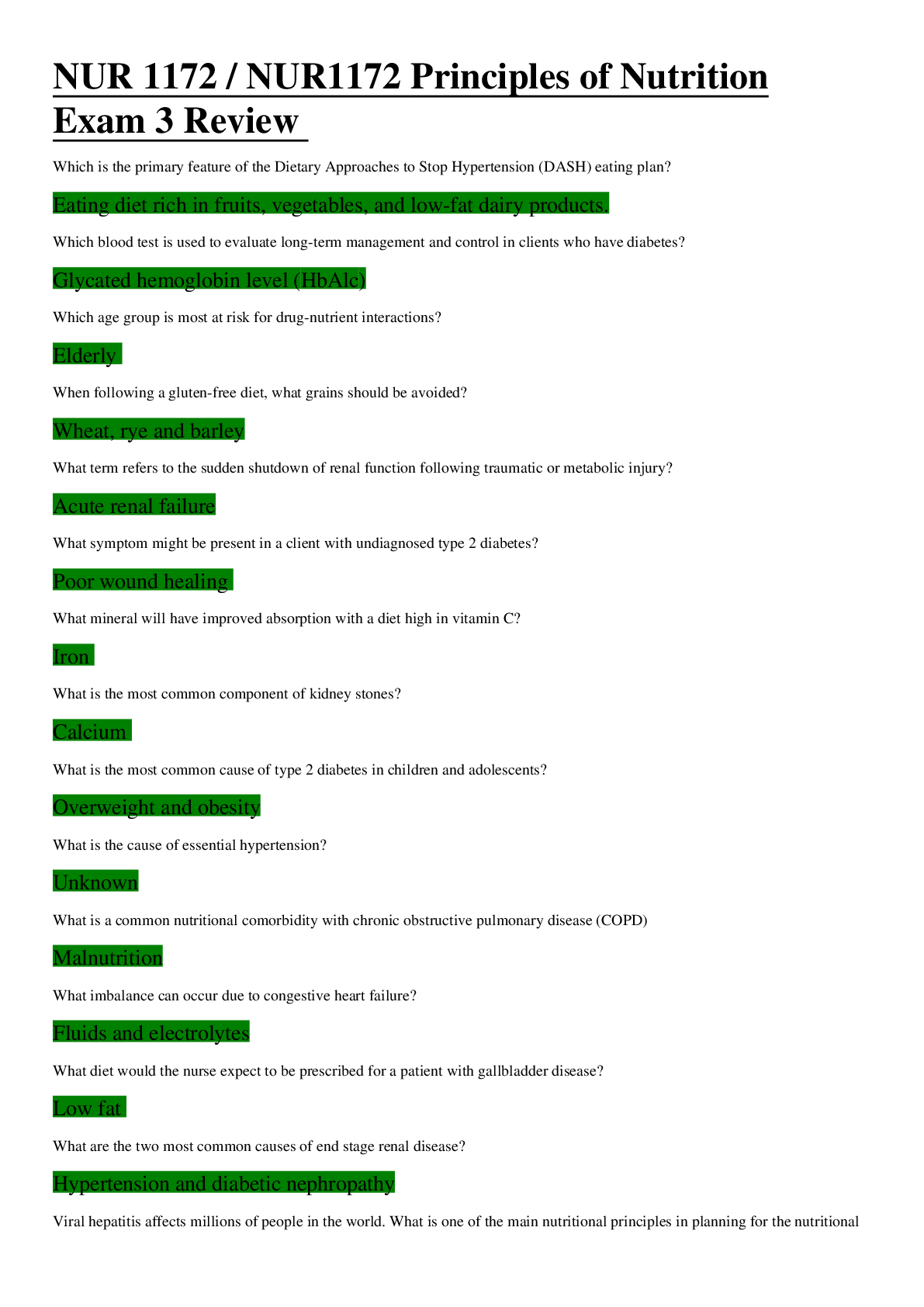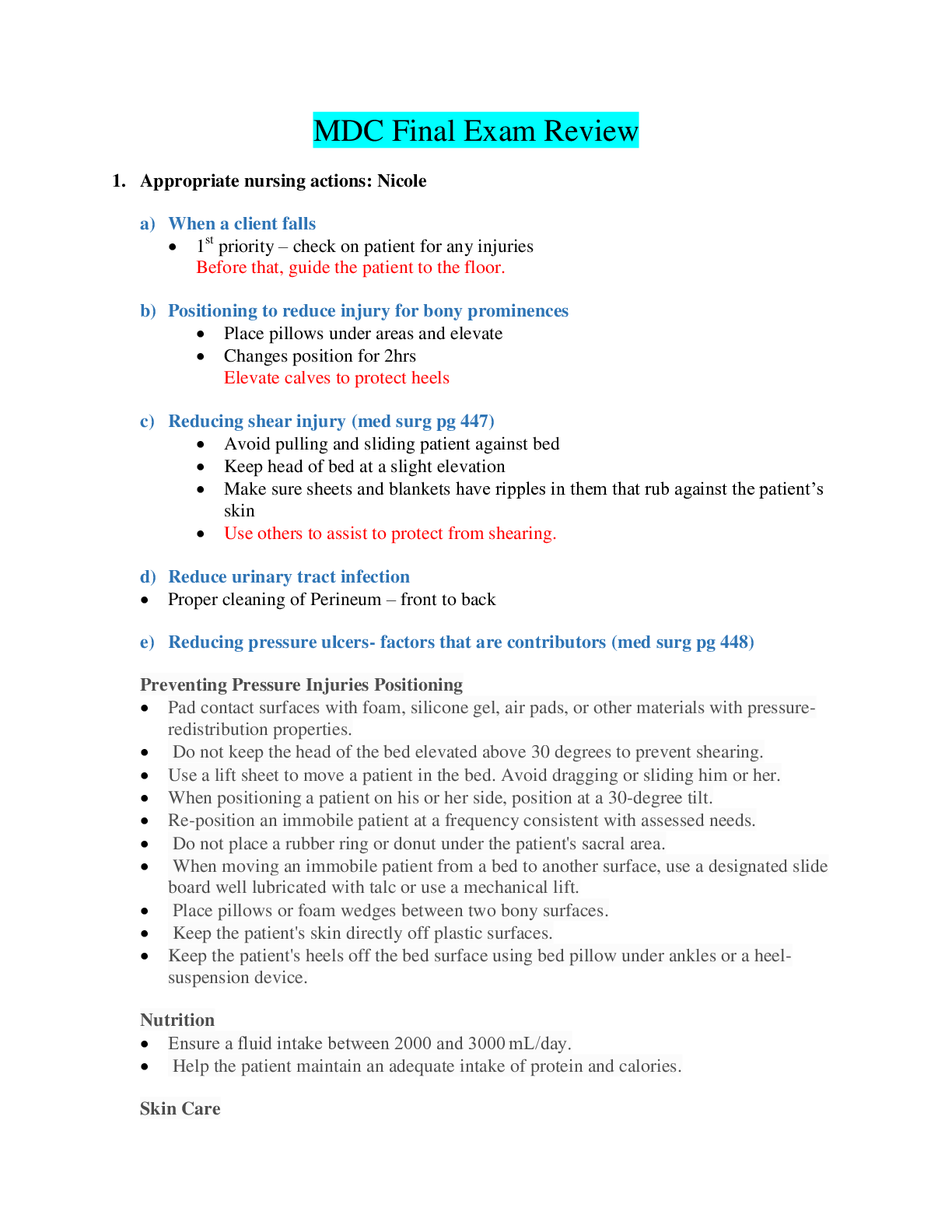BIOL 2450 Exam 3 review 2020 (updated) | BIOL2450 Exam 3 review
Document Content and Description Below
BIOL 2450 Exam 3 review 2020 (updated) EXAM #3 REVIEW Last Test Answers: 28. The part of the lymphatic system that screens the blood to remove defective blood cells is the: D. spleen 30. The ve... ssel that returns fluid lost from exchange at the tissues back to the circulation is: B. lymph capillary 31. In an inflammatory response, local vasodilation directly results in: C. redness 32. The first line of defense against foreign invaders is(are) E. skin 33. The movement of white blood cells through vessels to an injury site is called: A. diapedesis 34. The vessels containing one-way valves are: D. veins 35. The immune system component that causes neutralization or agglutination of foreign invaders is the antibody 39. Pathogens in the pharynx are usually removed from the body by the: E. tonsils 40. Tissues are drained of fluids by the circulatory system and by the: A. lymph capillaries 42. The immune system cells responsible for the massive release of antibodies in response to an initial invasion of a germ are E. plasma cells 44. Nonspecific body defenses include: B. complement C. histamines D. interferon E. natural killer cells 46. The part of the lymphatic system that contains valves for one-way flow in are the: A. lymph capillaries 47. A chemical involved in an inflammatory response is: A. complement B. histamine D. kinin E. prostaglandin 48. MHC proteins: A. are divided into different classes depending on the type of cell on which they are found B. are unique to the individual C. may complex with an antigen 50. The part of the lymphatic system that removes iron from defective red blood cells and recycles it is the: D. spleen 52. Lymphocytes become immunocompetent in the: C. thymus 57. The immune system cell infected by the AIDS virus is a:B. helper T 60. Which of these release Interleukin II:C. helper T cells 62. Which of the following structures is prominent in juveniles but completely atrophied in old adults: thymus 64. Which would be considered part of the lymphatic system: A. A. lymph nodes B. B. spleen C. D. tonsils Matching 11) First line of defense: intact skin and mucous membranes 12) Second line of defense: inflammatory response 13) Third line of defense: Immune response 14) Innate defense system: inflammatory response and skin and mucous membranes 15) Adaptive defense system: inflammatory response 16) Small proteins secreted by virus-containing cells: Interferon 17) Major innate mechanism that mediates destruction of foreign substances in the body: complement 18) Stimulate the proliferation of other lymphocytes: helper t cells 19) Dampen the activity of both T cells and B cells: regulatory t cells 20) Present the double activation signal to T cell: APC’s - - -- - - - - - - - - - - - - - - - - - - - - - - - -- b. spleen. Name the organs that compose the lymphatic system and give three general functions performed by this system. • The lymphatic system is closely associated with the cardiovascular system. The primary organs of the lymphatic system are the bone marrow and thymus gland, and the secondary lymphatic organs include the lymph nodes and spleen. These organs work together to transport excess tissue (interstitial) fluid to the blood stream, transport dietary fat, and help defend the body against disease causing agents. Trace the flow of lymph from interstitial tissues to the bloodstream. • Lymphatic pathways begin as lymphatic capillaries, which come together to form afferent lymphatic vessels, which lead to lymph nodes. The vessels that leave the lymph nodes are called efferent lymphatic vessels, which come together to form lymphatic trunks, which lead to two collecting ducts, which finally join the subclavian veins, where the lymph enters the cardiovascular system. Discuss the function of anchoring filaments that surround lymphatic capillaries. 1. are microscopic closed ended tubes that extend into interstitial spaces; 2. receive lymph through their thin walls 3. are associated with anchoring filaments, which serve an important function during edema (discussed later); 4. are located throughout the body, except in: a. avascular tissues; b. CNS; c. splenic pulp; d. bone marrow. 5. include lacteals that are lymphatic capillaries within villi of the small intestine. List the functions of the lymphatic system. • returns small leaked plasma proteins back to the blood stream. • transports foreign particles to the lymph nodes • transports lipids and lipid-soluble vitamins absorbed in GI tract to bloodstream. [Show More]
Last updated: 1 year ago
Preview 1 out of 19 pages
.png)
Buy this document to get the full access instantly
Instant Download Access after purchase
Add to cartInstant download
We Accept:

Reviews( 0 )
$11.50
Document information
Connected school, study & course
About the document
Uploaded On
Nov 09, 2020
Number of pages
19
Written in
Additional information
This document has been written for:
Uploaded
Nov 09, 2020
Downloads
0
Views
124













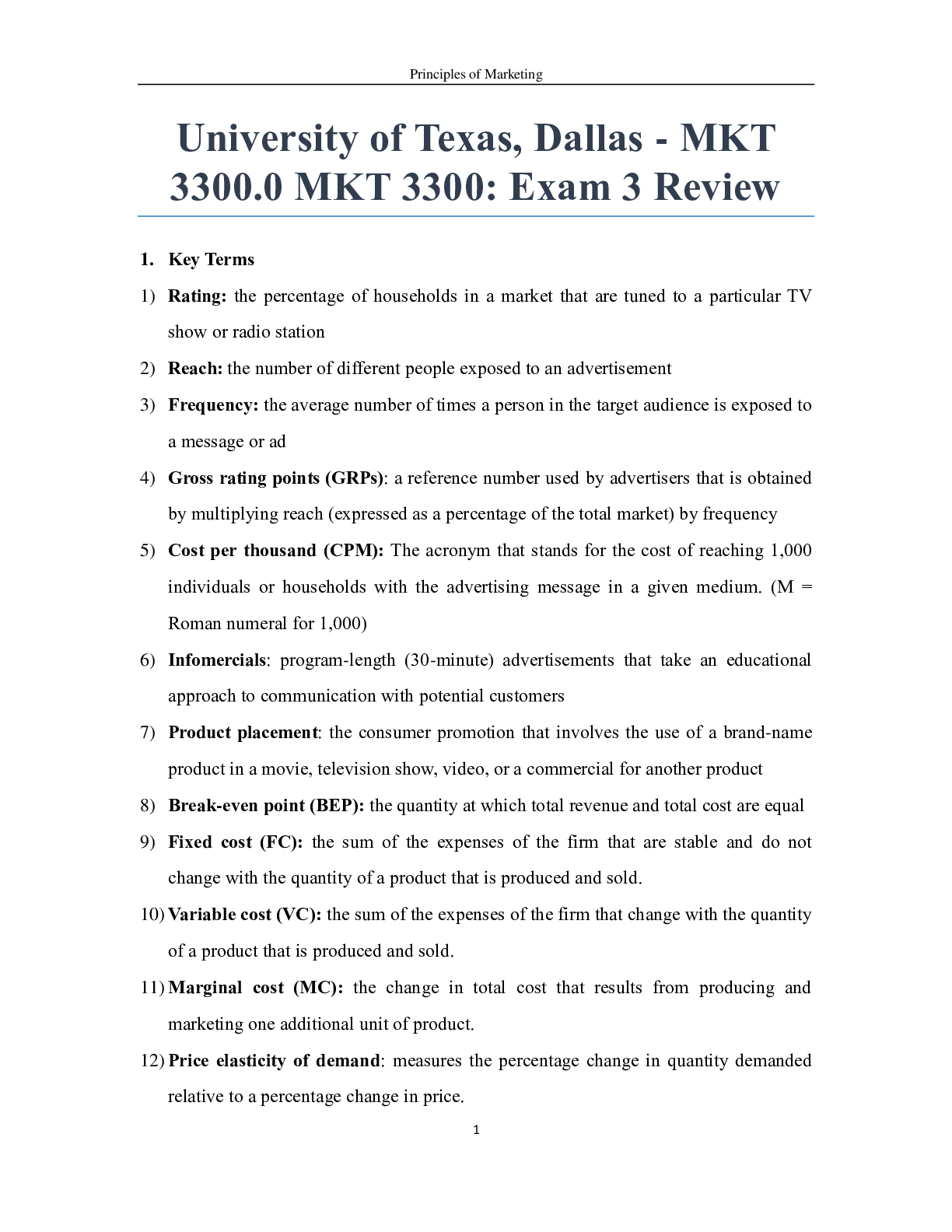
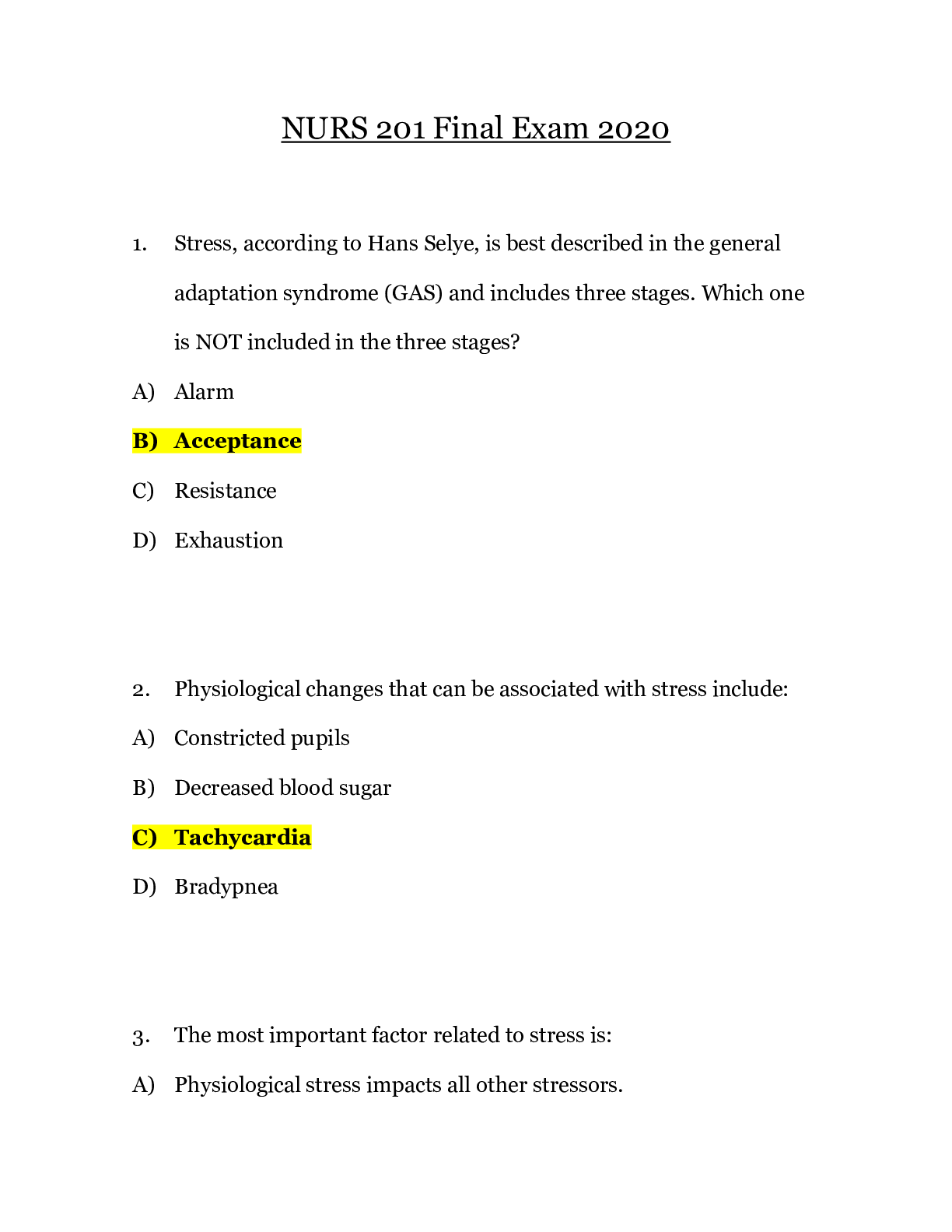
.png)
.png)


